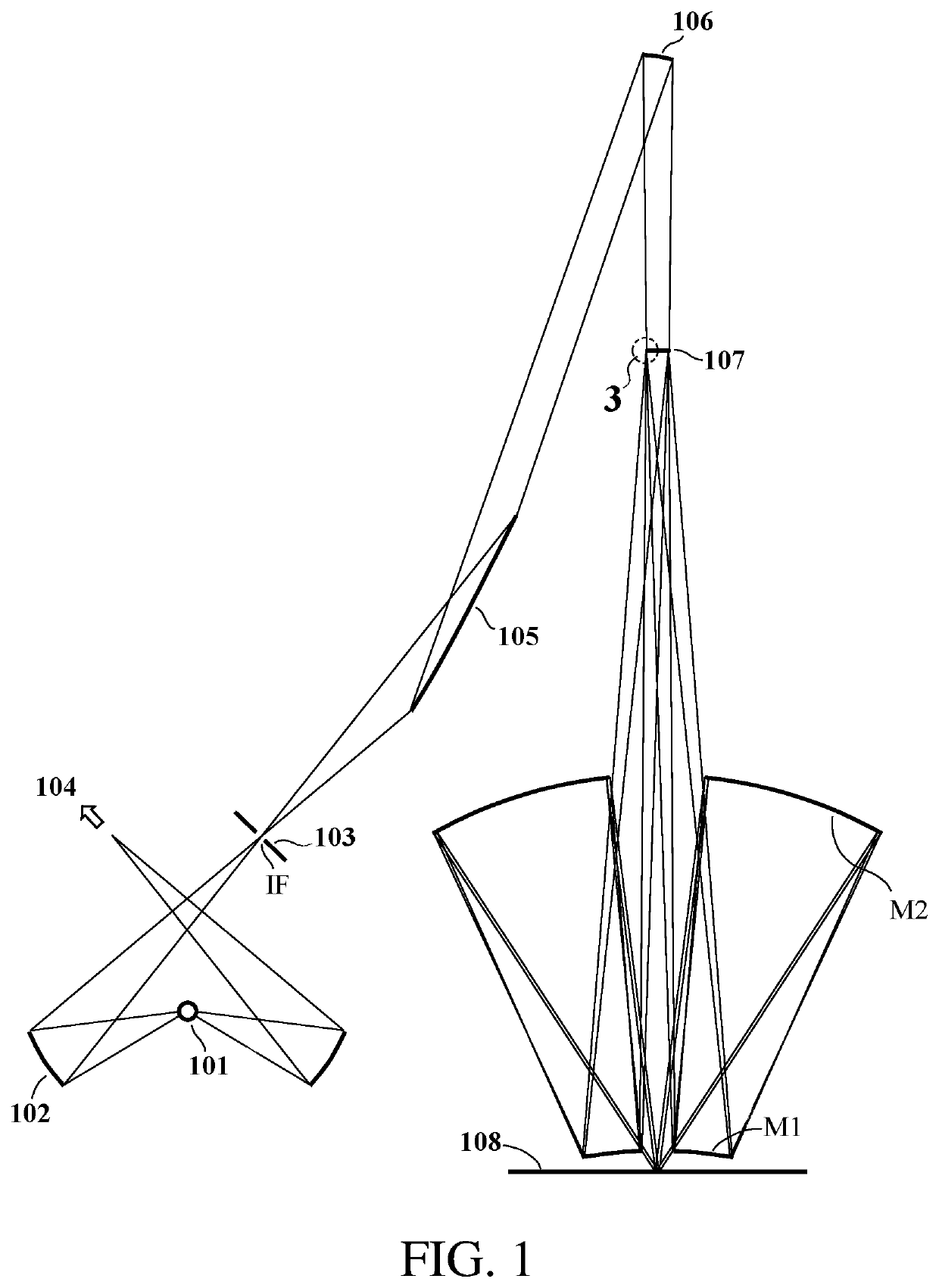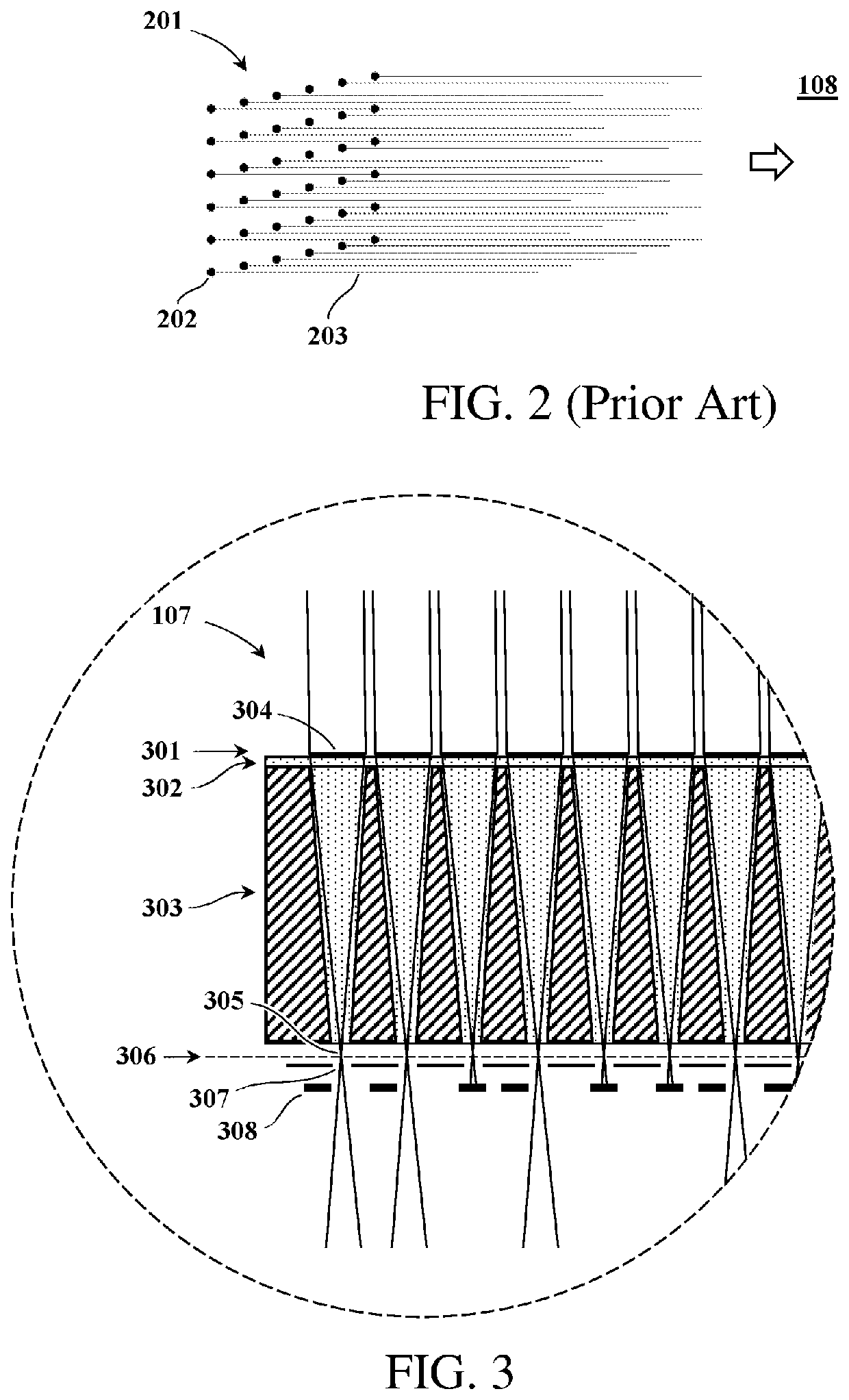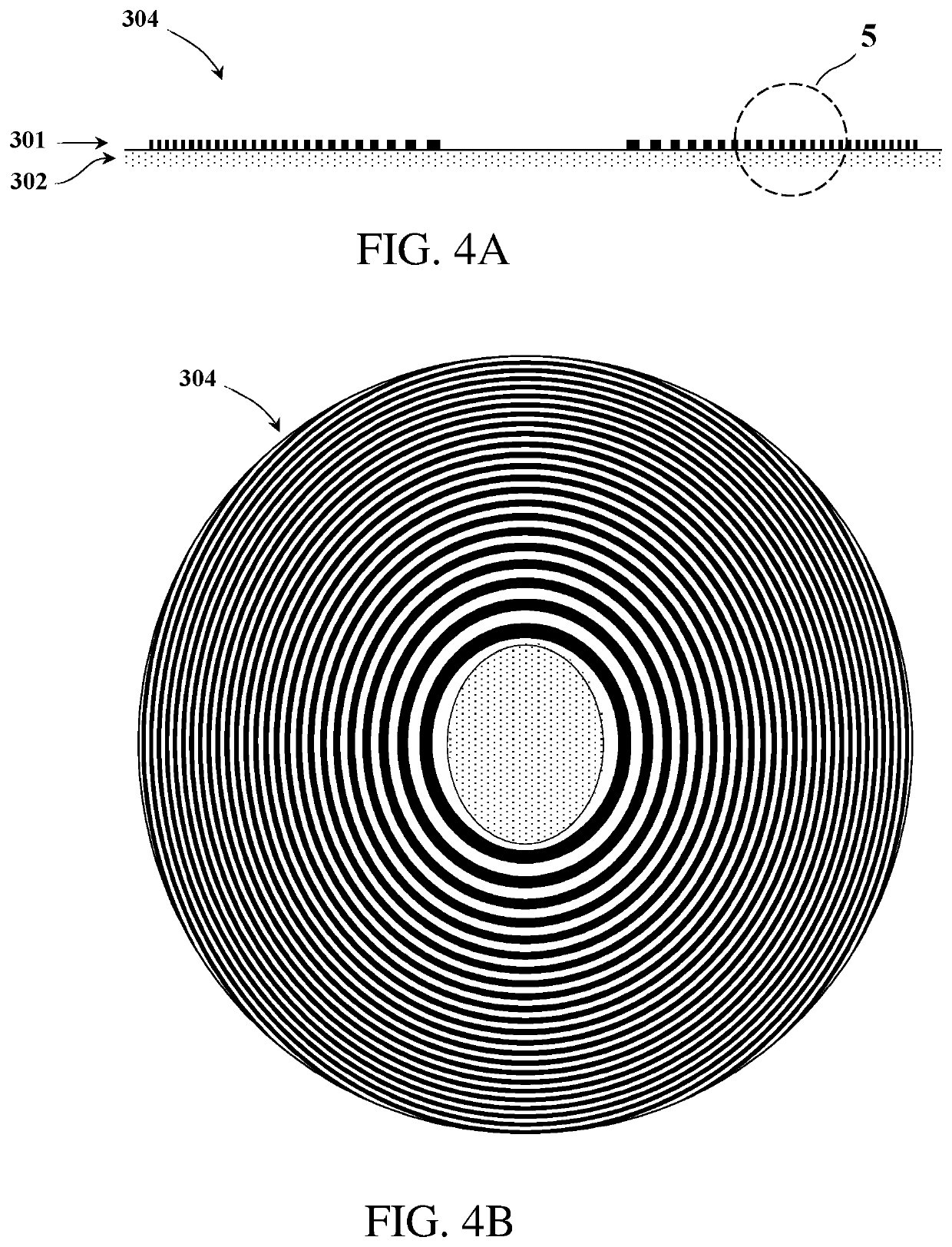EUV Lithography System with Diffraction Optics
a lithography system and ultraviolet light technology, applied in the field of ultraviolet light lithography, can solve the problems of limiting the power of euv scanners, limiting the scope of optical resolution acceptable, and the complexity and expense of lithography scanners (“step-and-scan” systems), so as to achieve the effect of neutralizing geometric and chromatic aberrations
- Summary
- Abstract
- Description
- Claims
- Application Information
AI Technical Summary
Benefits of technology
Problems solved by technology
Method used
Image
Examples
Embodiment Construction
[0047]Maskless EUV lithography scanner
[0048]FIG. 1 shows a schematic cross-sectional view of a maskless EUV lithography scanner, in an illustrative embodiment. An LPP plasma 101 generates EUV radiation, which is focused by an ellipsoidal collection mirror 102 to an intermediate focus IF, where it is spatially filtered by a small aperture 103. (A portion 104 of the LPP power may be diverted to one or more other similar scanner modules.) The IF-transmitted radiation is directed by illumination optics comprising two illumination mirrors, grazing-incidence element 105 and near-normal-incidence element 106, onto microlens array 107. (Many alternative design forms for the illumination optics are possible.) The microlenses partition the radiation into a large number of individual convergent beams (e.g., approximately 2 million). A projection system comprising two axially-symmetric, annular mirrors M1 and M2 focuses the beams onto an array of diffraction-limited focal spots on a writing sur...
PUM
| Property | Measurement | Unit |
|---|---|---|
| wavelength | aaaaa | aaaaa |
| relative speed | aaaaa | aaaaa |
| diameter | aaaaa | aaaaa |
Abstract
Description
Claims
Application Information
 Login to View More
Login to View More - R&D
- Intellectual Property
- Life Sciences
- Materials
- Tech Scout
- Unparalleled Data Quality
- Higher Quality Content
- 60% Fewer Hallucinations
Browse by: Latest US Patents, China's latest patents, Technical Efficacy Thesaurus, Application Domain, Technology Topic, Popular Technical Reports.
© 2025 PatSnap. All rights reserved.Legal|Privacy policy|Modern Slavery Act Transparency Statement|Sitemap|About US| Contact US: help@patsnap.com



